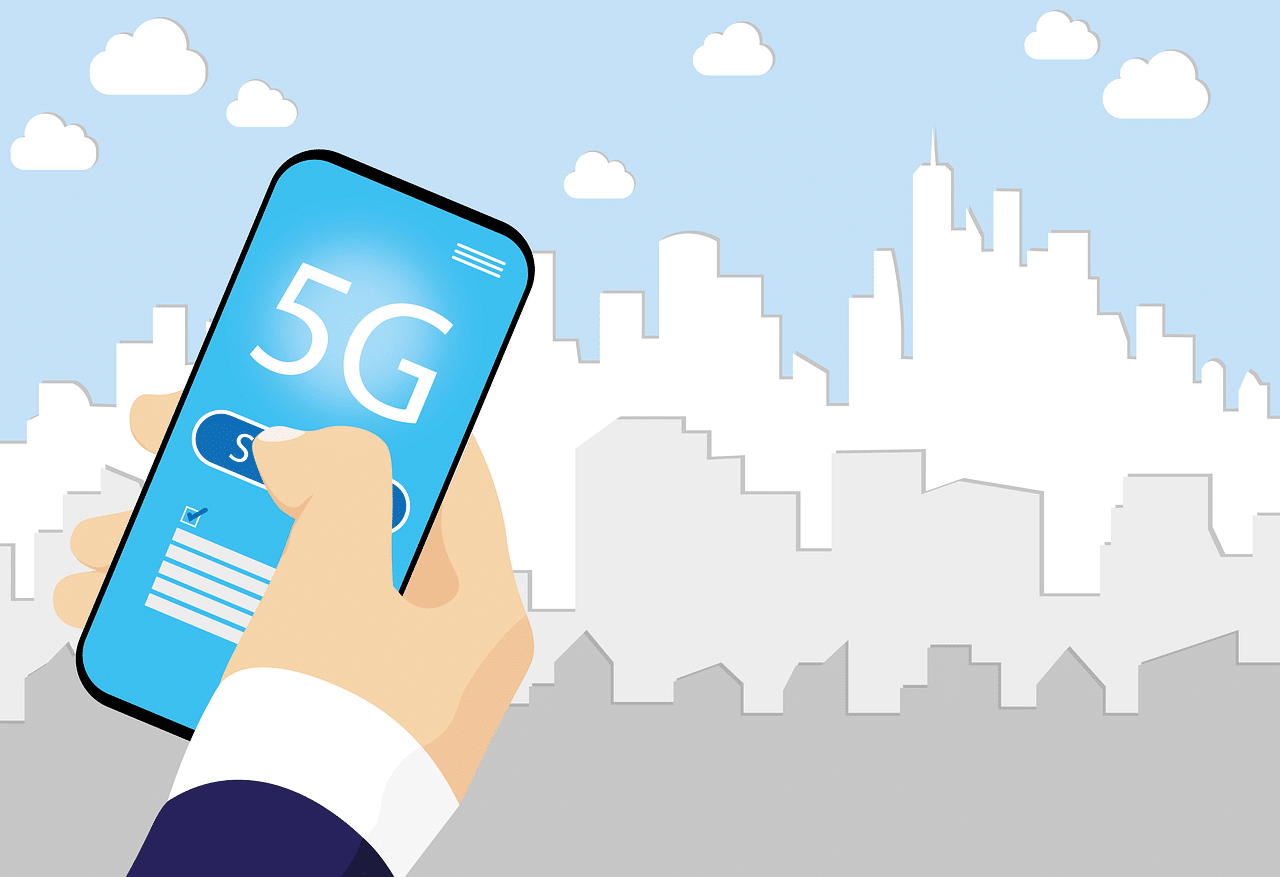
5G technology has multiple applications and uses.
5G is the name given to mobile telephone networks that use fifth generation technology . This infrastructure is characterized by the possibility of simultaneous connection of various wireless devices to provide them with access to telephone and Internet services with a latency and speed higher than those offered by previous generations thanks to their bandwidth.
5G networks use frequency bands that, compared to 4G networks , are higher. That is why they can increase network performance.
Advantages of 5G
5G technology , in short, multiplies the number of connected devices, minimizes latency and improves connection speed. For the user, it means being permanently connected to all of their devices.
Optimizing connectivity , specialists believe, will contribute to the development of the Internet of Things (IoT) and the use of artificial intelligence (AI) , as well as the growth of automation . The interconnection of street furniture, for example, is expected in this framework. It should be noted that the devices and machines themselves will be able to connect to each other.
It can be summarized by indicating that 5G will provide higher download and upload speeds and unprecedented stability in connections.

A 5G wireless network stands out for its high speed and ultra-low latency.
The story
To reach the development of 5G networks , there were four preceding generations. Each one represented an advance in the field of mobile or cellular telephony.
Before moving forward, it is important to indicate that a network of this type is made up of cells , each with its transmitter. The sum of the cells makes it possible to cover a large area.
First generation mobile telephony ( 1G ) was implemented in the 1980s and allowed only telephone calls. The Motorola DynaTAC 8000X is mentioned as the first phone to use it.
2G networks stood out for being digital. Introduced in 1992 , they introduced SMS . The Nokia 101 model was the first device to use this technology .
With 3G networks , voice and data transmission was allowed with the Universal Mobile Telecommunications System (UMTS) , incorporating the Internet connection. Then, at the end of 2010 , 4G technology was implemented, based on the IP protocol and broadband.
Finally, starting in 2014, progress was made with the development of 5G networks , which can be used by phones as well as desktop computers and notebooks. Ericsson , Huawei and MegaFon are some of the companies that developed the first tests.
Mass adoption of this technology is expected to begin in 2025 . It should be noted that 5G networks can operate in three frequency bands: high, medium and low.

5G networks can help urban traffic management.
5G Features
More speed, less latency , more connected devices. Thus the characteristics of 5G could be simplified if we establish a comparison with previous standards.
Although these mobile networks are not yet fully active, it is stated that they will allow 10 Gbps (gigabits per second) navigation . This data transmission will make it possible to download an entire movie in just a few seconds.
The idea of latency , on the other hand, refers to the delay in the network response. It is believed that it will be reduced to about 5 milliseconds , which is equivalent to a near real-time connection. Regarding the increase in the number of connected machines and systems, it will make interaction with vehicles, appliances, industrial machines and any other device possible.
Your applications
5G technology will make numerous advances possible and will enhance certain activities or procedures that, for now, are just projects or are taking their first steps.
Experts say that 5G will help consolidate smart cities . The IoT will be vital for data collection, allowing more efficient traffic management, reducing polluting emissions and optimizing public services.
Medical services will also benefit from 5G . Telemedicine , remote surgical interventions and greater personalization of care are part of the anticipated advantages.
The growth of virtual reality (VR) and augmented reality (AR) , greater automation in the industry thanks to sensors and new fleets of autonomous vehicles will also be consequences of the development and implementation of 5G networks .
What is needed to use 5G
Those who want to take advantage of the benefits of 5G connectivity have to meet three essential requirements:
- Be in a 5G coverage area.
- Have a phone approved for this type of connectivity.
- Have the 5G network search function enabled.
As you can see, there is no point in having the most modern device if there is no 5G coverage in the city. At the same time, if such coverage is available to the individual who has an older device, he or she will not be able to connect to the advanced network.
The network search function in 5G is the other step that cannot be ignored. Apple 's iPhone 15 , Samsung 's Galaxy S23 and Motorola 's Moto Razr 40 are just some of the devices that are prepared to make use of 5G technology.
some myths
It is interesting to mention that, just as multiple benefits of 5G connectivity are recognized, this technology has also been accused of causing different evils. Accusations that, as various studies have shown, are false.
It was said, for example, that 5G networks contributed to the development of the COVID-19 pandemic . However, the World Health Organization (WHO) highlighted that viruses cannot travel through electromagnetic waves.
In a similar sense, it was stated that the symptoms attributed to dengue are, in fact, an effect of 5G radiation . However, there is no scientific proof of this.
